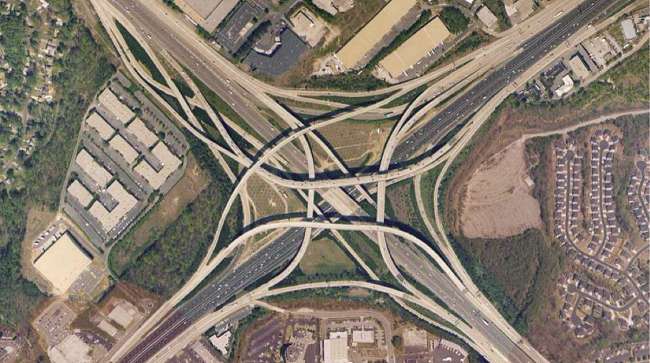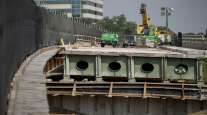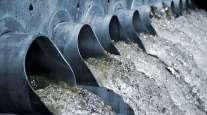Staff Reporter
Improving Infrastructure Can Cut Fuel Costs, Aid Environment, ATRI Study Finds

Just 12% of the nation’s interstate road system is causing 89% of the trucking industry’s congestion problems, and repairs to the key choke points that cause delays could reap benefits in fuel consumption and emissions reductions, the American Transportation Research Institute said.
As part of its “Fixing the 12%” research initiative that studies these key bottlenecks, ATRI on March 5 released a case study about one infamous spot: Spaghetti Junction in Atlanta. It is the second in a series; the first report was released in February 2017 and looked at congestion problems in Breezewood, Pa.
In this latest report, ATRI determined that unclogging Spaghetti Junction — the interchange of interstates 285 and 85 in Georgia’s capital — could save trucking companies and commuters 4.5 million gallons of fuel annually. It noted there also would be environmental benefits: Cutting congestion at the site could decrease fine particulate matter by 17%, smog-forming nitrogen-oxide emissions by 5.5% and carbon dioxide emissions by 8%, ATRI said.
In January, ATRI released its annual ranking of interstate bottlenecks, and ranked Spaghetti Junction as the second-worst in the nation. It has been ranked No. 1 in the past, but this year was supplanted by the passage to the George Washington Bridge on the New Jersey side of the Hudson River at the intersection of I-95 and state Route 4.
Interchanges such as Spaghetti Junction, with myriad overpasses, tend to confuse some drivers and cause them to slow down at crucial spots, which can worsen congestion, according to one research expert.
“I used to go through Spaghetti Junction on a regular basis and it would still throw me off,” said Amy Moore, a transportation and energy researcher at Oak Ridge National Laboratory in Tennessee, and a Georgia native, speaking to Transport Topics. “There are so many overpasses.”
The report’s research combined ATRI’s unique truck GPS database to determine vehicle speeds by time of day, emissions factors derived from the U.S. Environmental Protection Agency’s state-of-the-science emissions model and daily trip counts collected by the Georgia Department of Transportation.
ATRI’s study estimated that increasing average vehicle speeds to 55 mph, which currently are as low as 14 mph during the weekday evening commute, would produce savings in fuel and decrease pollutants.
New #ATRI Research Quantifies Impacts of Congestion on Fuel Consumption and Emissions https://t.co/cYIvL5pYXk #truckingresearch — Rebecca Brewster (@ATRIPREZ) March 5, 2019
ATRI says its research so far estimates that nationally, congestion increased the trucking industry’s fuel consumption by 6.87 billion gallons in 2016, adding $15.74 billion to its fuel bill. ATRI estimated that 2016 congestion resulted in an annual cost to the trucking industry of $74.5 billion, according to Michael Tunnell, ATRI environmental research director.
One trucking official said that congressional lawmakers should take action to address highway congestion so that the industry could improve freight movement while also reducing costs and pollution.
Rich McArdle, president of UPS Freight and an ATRI board member, told TT that Congress should pass the American Trucking Associations’ Build America Fund, a plan to modernize the U.S. network of roads and bridges. The plan would raise $340 billion over 10 years. It would allow the U.S. Department of Transportation to better target the worst bottlenecks in the nation, McArdle said.
McArdle said if every UPS vehicle is delayed five minutes a day, it costs the Atlanta-based company $114 million annually. The problems and costs of bottlenecks also extend to freight customers, McArdle said.
“Any time we have congestion points, it puts pressure on us,” McArdle said.
Moore said she favors more public transit and creation of high-occupancy vehicle lanes, which can only be used by cars with two or more occupants. This would reduce the number of cars on interstates, especially in populated areas where bottlenecks are likely.
Moore also noted that trucks must use interstates to get to distribution centers, whereas car users have more options, including carpooling and public transit, two things that would reduce interstate congestion.
“It’s not the trucks that are the problems, it’s the cars,” Moore said.




